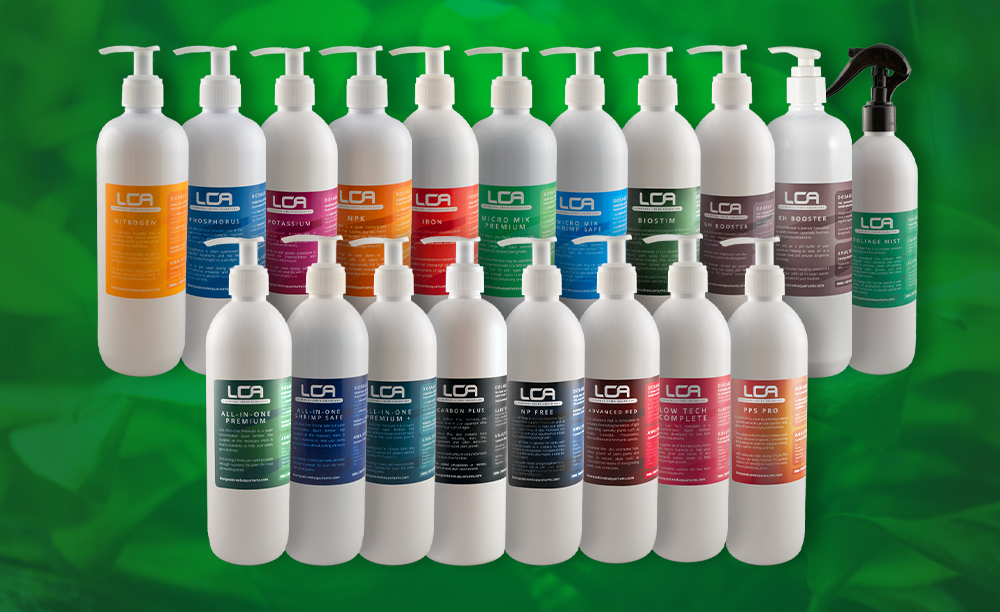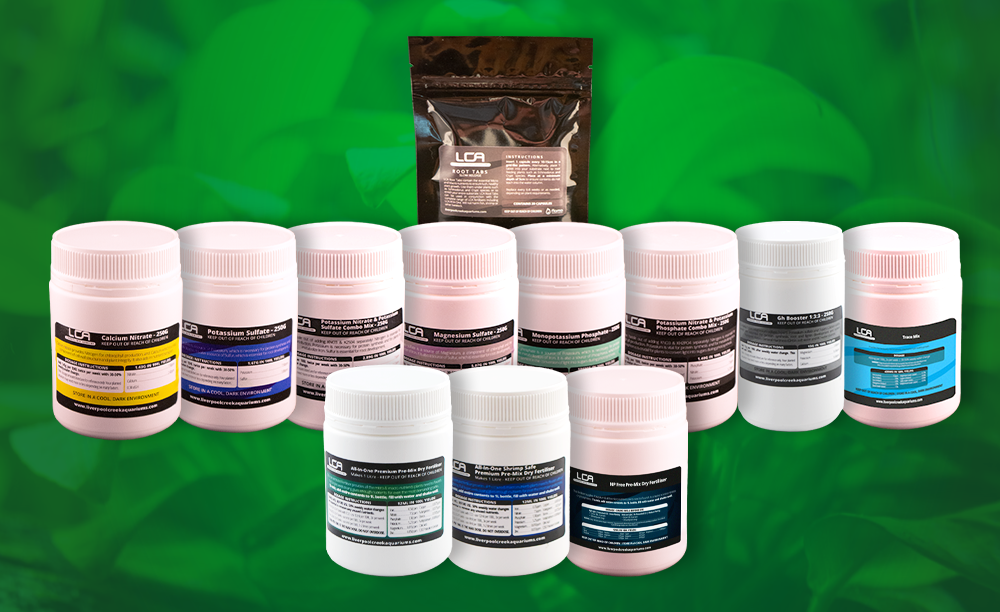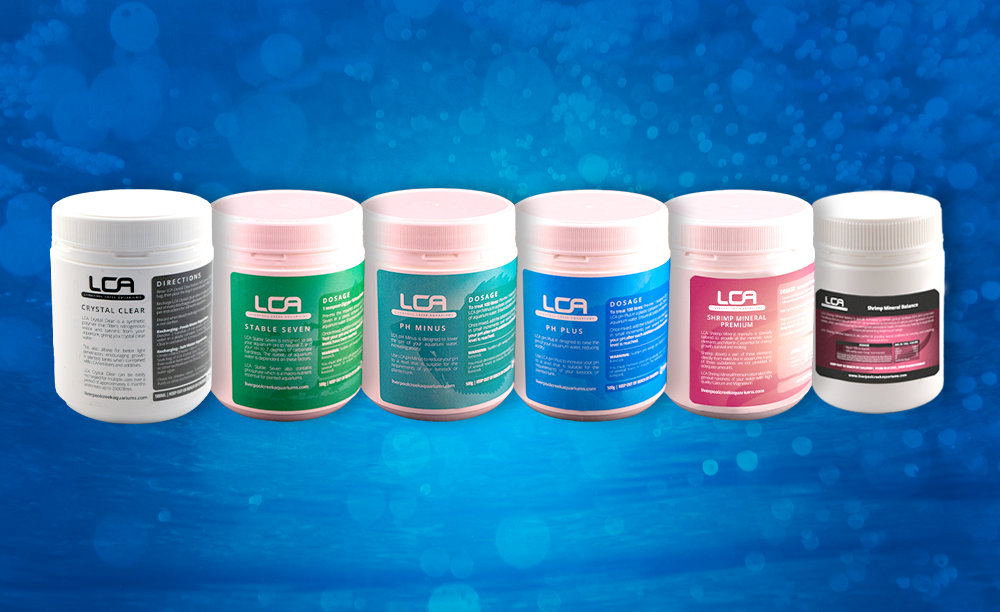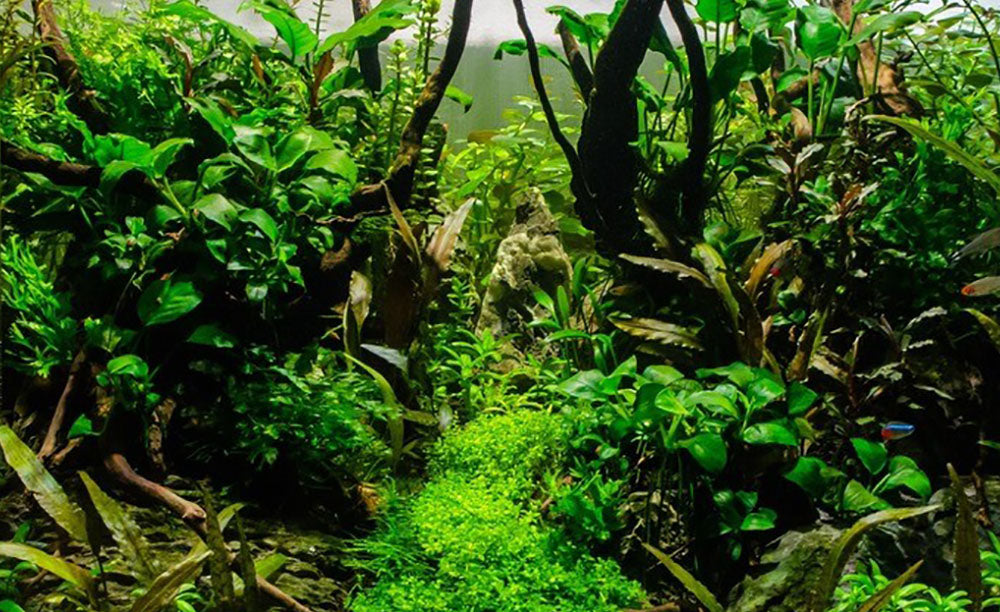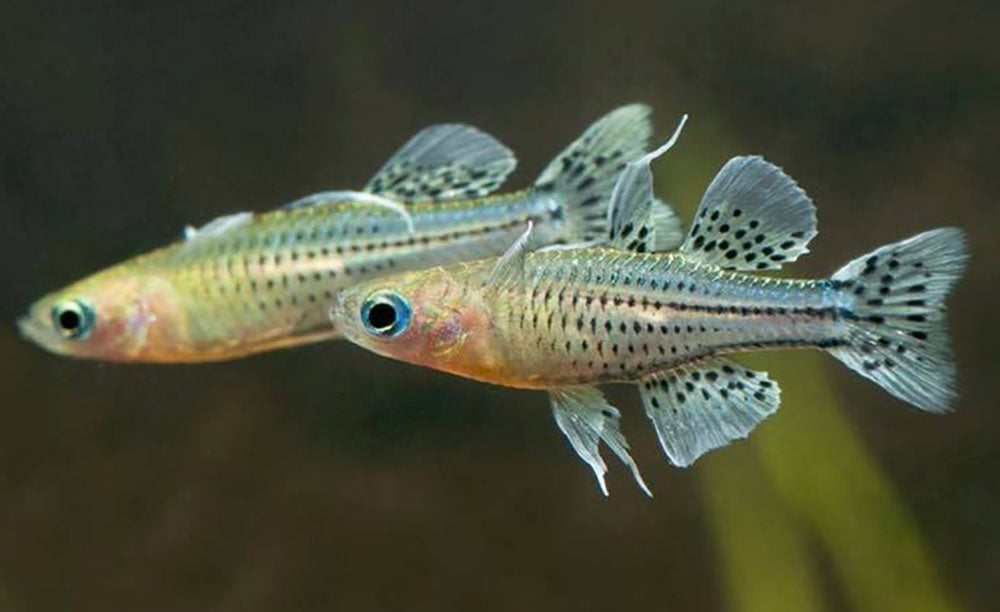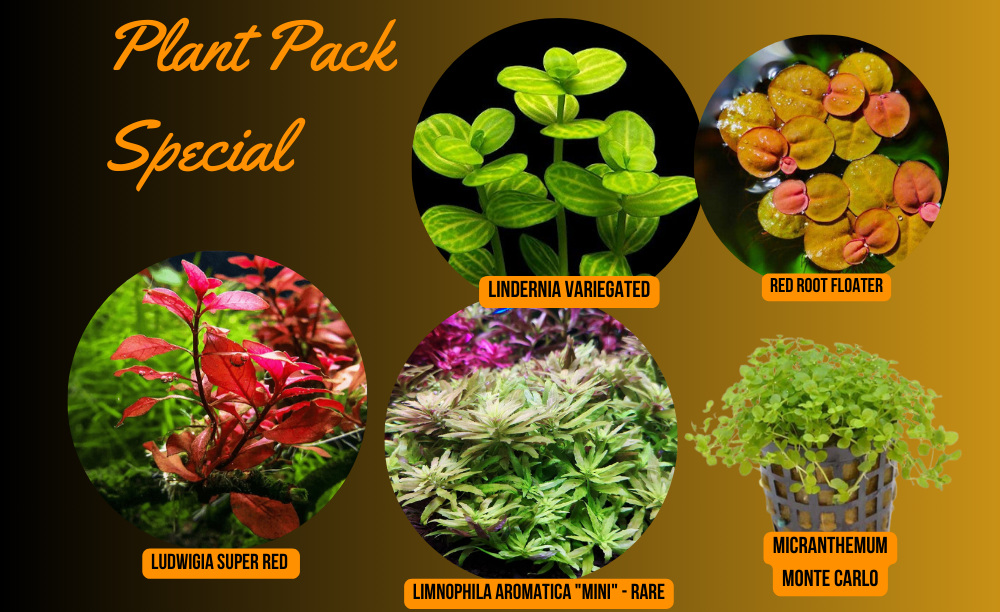Your Cart is Empty
*******FREE SHIPPING FOR ORDERS OVER $200*******
submit your order by 11.59 am Sunday morning for same week delivery
*******FREE SHIPPING FOR ORDERS OVER $200*******
submit your order by 11.59 am Sunday morning for same week delivery
Store
SPECIALS / PLANT PACKS
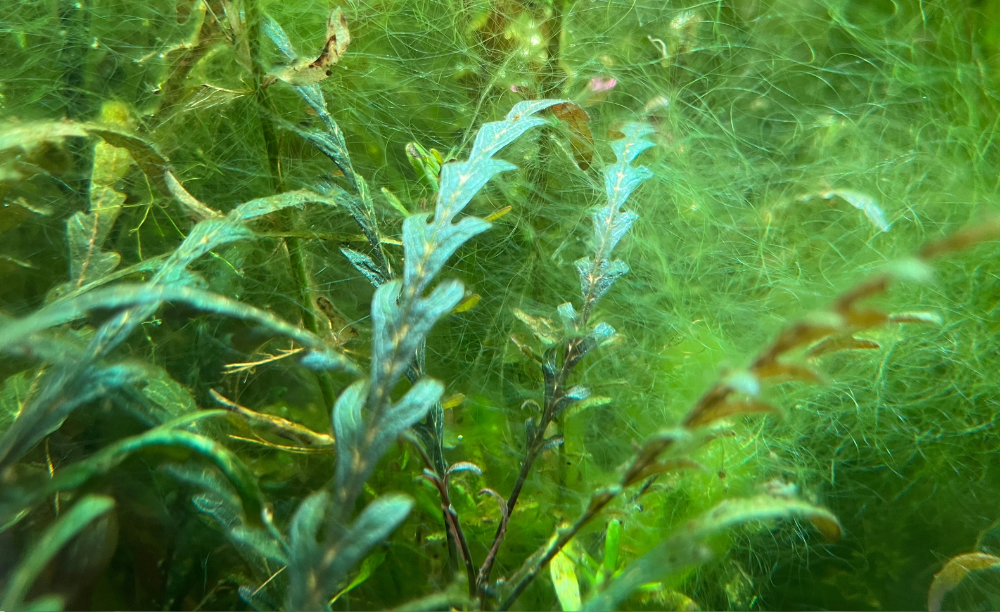
Algae Guide Part 1
7 min read
Excess organics
Organics build up in aquariums from uneaten food, fish excretions, decaying plant matter and from the remains of any dead livestock such as snails and fish.
The bacteria in your aquarium do a great job of converting organic waste into compounds plants can use, but they can’t process larger materials quickly enough before organics start releasing into the water column.
Manually removing waste by hand and siphon, performing weekly water changes and regular maintenance of your mechanical filtration goes a long way to keeping organics under control. You can also add livestock such as shrimp and snails to help break down decaying plants and uneaten food before they start to rot.
You should also ensure your filtration is adequate for the size of your tank and that water is circulating enough to move smaller waste into your filtration where the bacteria can do its job.
The last aspect to consider is the age of your aquarium. Newly set-up aquariums will still be “cycling” – that is, the process of your filter growing a bed of beneficial bacteria. At this early stage of your aquarium’s life, the filter doesn’t have sufficient bacteria to remove these organics.
This is often referred to as “new tank syndrome” and is simply a part of the process – once your aquarium has had time to cycle and establish its good bacteria, it should be much easier to achieve balance.
Keeping your aquarium densely planted from the start is also an excellent way to keep new tank syndrome under control as the plants work to consume ammonia and other compounds.
Organics build up in aquariums from uneaten food, fish excretions, decaying plant matter and from the remains of any dead livestock such as snails and fish.
The bacteria in your aquarium do a great job of converting organic waste into compounds plants can use, but they can’t process larger materials quickly enough before organics start releasing into the water column.
Manually removing waste by hand and siphon, performing weekly water changes and regular maintenance of your mechanical filtration goes a long way to keeping organics under control. You can also add livestock such as shrimp and snails to help break down decaying plants and uneaten food before they start to rot.
You should also ensure your filtration is adequate for the size of your tank and that water is circulating enough to move smaller waste into your filtration where the bacteria can do its job.
The last aspect to consider is the age of your aquarium. Newly set-up aquariums will still be “cycling” – that is, the process of your filter growing a bed of beneficial bacteria. At this early stage of your aquarium’s life, the filter doesn’t have sufficient bacteria to remove these organics.
This is often referred to as “new tank syndrome” and is simply a part of the process – once your aquarium has had time to cycle and establish its good bacteria, it should be much easier to achieve balance.
Keeping your aquarium densely planted from the start is also an excellent way to keep new tank syndrome under control as the plants work to consume ammonia and other compounds.
Excess ammonia
Ammonia is a problem in any aquarium – it’s toxic to livestock and algae also thrives on it. Thankfully plants can consume it as well, but algae will enjoy any small amount it can get and doesn’t need much to start overgrowing a tank.
Ammonia is required for an aquarium to cycle. Bacteria colonies grow and convert it to nitrite, which more bacteria then convert into safe and usable nitrate (which plants love!). If you have planted out your tank from the beginning, a lot of this excess will thankfully be used up.
While the ammonia is peaking during this time you are likely to see algae. It’s nothing to worry about and should resolve on its own.
But ammonia can spike for other reasons. Significantly disturbing the substrate in an established tank or one using soil/aquasoil can release ammonia that was trapped into your water column. This can be easily resolved by performing water changes to reduce the excess.
It is also possible for your beneficial bacteria to die off, causing your “cycle” to crash/restart. Usually this is a result of some shock – overcleaning your filter, or cleaning your filter with water that hasn’t been dechlorinated, or a rapid change in water parameters. Usually when this happens, your cycle should re-establish quite quickly, as a decent amount of bacteria will still be active in your aquarium. You will just need to maintain water quality through changes while your cycle re-establishes.
Ammonia is a problem in any aquarium – it’s toxic to livestock and algae also thrives on it. Thankfully plants can consume it as well, but algae will enjoy any small amount it can get and doesn’t need much to start overgrowing a tank.
Ammonia is required for an aquarium to cycle. Bacteria colonies grow and convert it to nitrite, which more bacteria then convert into safe and usable nitrate (which plants love!). If you have planted out your tank from the beginning, a lot of this excess will thankfully be used up.
While the ammonia is peaking during this time you are likely to see algae. It’s nothing to worry about and should resolve on its own.
But ammonia can spike for other reasons. Significantly disturbing the substrate in an established tank or one using soil/aquasoil can release ammonia that was trapped into your water column. This can be easily resolved by performing water changes to reduce the excess.
It is also possible for your beneficial bacteria to die off, causing your “cycle” to crash/restart. Usually this is a result of some shock – overcleaning your filter, or cleaning your filter with water that hasn’t been dechlorinated, or a rapid change in water parameters. Usually when this happens, your cycle should re-establish quite quickly, as a decent amount of bacteria will still be active in your aquarium. You will just need to maintain water quality through changes while your cycle re-establishes.
Irregular maintenance
To keep a healthy, algae-free tank, regular maintenance is absolutely essential.
Weekly water changes of 30-50% of the total tank volume ensures nutrient levels are kept steady, and that other solids don’t build up for algae to use.
Cleaning your mechanical filtration of organic solids on a semi-regular basis ensures water flow is not reduced, keeping your filter efficient and allowing the bacteria to remove unwanted compounds. However, it’s important not to clean your filter too regularly as you can remove too much of the beneficial bacteria. A general rule of thumb is that if you notice your filter output is not as strong as usual, it’s time to clean it. At the very least, ensure you clean your filter once every 2-3 months.
Manual removal of any larger pieces of decaying material such as rotting leaves, uneaten food and fish waste reduces organics that algae can thrive on too. You can do this by hand for larger solids and with a siphon for smaller materials. This is best done during water changes, and doing so as part of a regular weekly water change schedule ensures your tank is kept clean and free of excess nutrients.
To keep a healthy, algae-free tank, regular maintenance is absolutely essential.
Weekly water changes of 30-50% of the total tank volume ensures nutrient levels are kept steady, and that other solids don’t build up for algae to use.
Cleaning your mechanical filtration of organic solids on a semi-regular basis ensures water flow is not reduced, keeping your filter efficient and allowing the bacteria to remove unwanted compounds. However, it’s important not to clean your filter too regularly as you can remove too much of the beneficial bacteria. A general rule of thumb is that if you notice your filter output is not as strong as usual, it’s time to clean it. At the very least, ensure you clean your filter once every 2-3 months.
Manual removal of any larger pieces of decaying material such as rotting leaves, uneaten food and fish waste reduces organics that algae can thrive on too. You can do this by hand for larger solids and with a siphon for smaller materials. This is best done during water changes, and doing so as part of a regular weekly water change schedule ensures your tank is kept clean and free of excess nutrients.
Insufficient filtration
It’s no surprise that algae will show up in a tank with inadequate filtration. As we’ve discussed, the bacteria in your filter converts the ammonia that algae loves into other compounds. If your filter can’t remove the solid waste and hold enough bacteria for the livestock and size of your aquarium, your water is always going to be low quality with excess ammonia and other organics present.
While many types of filters exist, not all are created equal. You want a filter that can:
There is no such thing as “too much” filtration. The more water your filter can circulate per hour, the better – as long as your livestock don’t mind the flow!
It’s no surprise that algae will show up in a tank with inadequate filtration. As we’ve discussed, the bacteria in your filter converts the ammonia that algae loves into other compounds. If your filter can’t remove the solid waste and hold enough bacteria for the livestock and size of your aquarium, your water is always going to be low quality with excess ammonia and other organics present.
While many types of filters exist, not all are created equal. You want a filter that can:
- Hold as much filter media as possible including mechanical (sponges) and biological (e.g. ceramic rings)
- Pump through approximately 8-10 times your total water volume per hour
There is no such thing as “too much” filtration. The more water your filter can circulate per hour, the better – as long as your livestock don’t mind the flow!
Not enough water circulation.
That’s right – water circulation is also a factor in the growth of unwanted algae!
The flow of water in your aquarium transports nutrients and CO2 throughout your plant mass, and if you have any “dead” spots where water is not flowing, nutrients can settle in those areas instead of being delivered to your plants, allowing algae to use it up instead.
Circulation is also important in moving waste through your tank to your filtration, to be converted into plant-usable compounds.
You can increase circulation either by upgrading to a more powerful filter or by adding a small circulation pump.
On the subject of water circulation, agitation of your water’s surface is also important. If the surface of you aquarium water is too still, a slimy protein film can form, blocking the exchange of oxygen/gas with your water. This gas exchange is required for livestock, bacteria and your plants to remain healthy! It’s simple enough to adjust this by pointing your filter outlet towards the surface of your aquarium. A slight ripple is all that is needed.
Not enough nutrients for plant mass
One of the biggest mistakes you can make in a planted tank is to reduce fertilisation in an attempt to get rid of algae. In fact, this will lead to more algae, as the plants stop growing from a lack of all the necessary nutrients – allowing the algae to use what’s there instead. You can’t starve algae without starving plants!
Plants need more nutrients than algae to grow lush and healthy. Algae can thrive from a very small amount of nutrients, whereas plants really need a balanced mix of both macro and micro nutrients to survive.
Achieving the right balance can be difficult. Regular dosing with a comprehensive fertiliser is essential. You need to consider the volume of water in your aquarium, plant mass and just how “hungry” your plants are.
For example, in a low-tech system using medium to low lighting and no pressurised CO2, plant demands will not be very high. Fertilisation will still be required but at a reduced rate. Fertilisers such as LCA Low Tech Complete and LCA NP Free are ideal for these systems as they supply a smaller amount of nutrients.
In a tank using intense lighting and pressurised CO2, your plants will want to grow more vigorously and will rapidly use up the nutrients you supply. Estimative Index (EI) dosing with fertilisers such as LCA All in One Premium is an excellent way to ensure you’re delivering enough nutrients – in fact, dosing with the EI method ensures an excess of nutrients are supplied, so you can then focus on lighting and CO2 if there are any issues.
You can also add Root Tabs to your substrate to enrich it or to target specific nutrient-hungry plants.
To reiterate – you need to find the right balance of nutrients for your tank – not too much, not too little.
One of the biggest mistakes you can make in a planted tank is to reduce fertilisation in an attempt to get rid of algae. In fact, this will lead to more algae, as the plants stop growing from a lack of all the necessary nutrients – allowing the algae to use what’s there instead. You can’t starve algae without starving plants!
Plants need more nutrients than algae to grow lush and healthy. Algae can thrive from a very small amount of nutrients, whereas plants really need a balanced mix of both macro and micro nutrients to survive.
Achieving the right balance can be difficult. Regular dosing with a comprehensive fertiliser is essential. You need to consider the volume of water in your aquarium, plant mass and just how “hungry” your plants are.
For example, in a low-tech system using medium to low lighting and no pressurised CO2, plant demands will not be very high. Fertilisation will still be required but at a reduced rate. Fertilisers such as LCA Low Tech Complete and LCA NP Free are ideal for these systems as they supply a smaller amount of nutrients.
In a tank using intense lighting and pressurised CO2, your plants will want to grow more vigorously and will rapidly use up the nutrients you supply. Estimative Index (EI) dosing with fertilisers such as LCA All in One Premium is an excellent way to ensure you’re delivering enough nutrients – in fact, dosing with the EI method ensures an excess of nutrients are supplied, so you can then focus on lighting and CO2 if there are any issues.
You can also add Root Tabs to your substrate to enrich it or to target specific nutrient-hungry plants.
To reiterate – you need to find the right balance of nutrients for your tank – not too much, not too little.
Too much light
On the subject of nutrients, let’s briefly discuss lighting. The maximum amount of time your lights should be on, for any tank, is 10 hours. Any more than that is going to be unused by your plants, except in tanks that are really being pushed to the limit.
Low-tech tanks need less light, between 6-8 hours is usually sufficient.
Some hobbyists like to have a “siesta” period for their lighting – a break in between lighting periods. While this does nothing to fight algae, it does allow for viewing of the aquarium at morning and evening without an excessive photoperiod, and won’t harm your plants (unless the break is so long the plants aren’t able to use the fertiliser nutrients they are being given).
The intensity of your light should also be considered. Algae will thrive in a tank that is intensely lit if you don’t have the plant mass and nutrients to use the light being given. Bright lighting should be used only in tanks utilising pressurised CO2, where plants are being pushed to their limits.
If you are experiencing an algae outbreak with a photoperiod longer than 6-8 hours, consider reducing your lighting time by one hour and observe for any changes over a few weeks.
On the subject of nutrients, let’s briefly discuss lighting. The maximum amount of time your lights should be on, for any tank, is 10 hours. Any more than that is going to be unused by your plants, except in tanks that are really being pushed to the limit.
Low-tech tanks need less light, between 6-8 hours is usually sufficient.
Some hobbyists like to have a “siesta” period for their lighting – a break in between lighting periods. While this does nothing to fight algae, it does allow for viewing of the aquarium at morning and evening without an excessive photoperiod, and won’t harm your plants (unless the break is so long the plants aren’t able to use the fertiliser nutrients they are being given).
The intensity of your light should also be considered. Algae will thrive in a tank that is intensely lit if you don’t have the plant mass and nutrients to use the light being given. Bright lighting should be used only in tanks utilising pressurised CO2, where plants are being pushed to their limits.
If you are experiencing an algae outbreak with a photoperiod longer than 6-8 hours, consider reducing your lighting time by one hour and observe for any changes over a few weeks.
Unhealthy plants
All plants eject some unused organics, especially from leaf surfaces and edges. As leaves age or become unhealthy due to poor growth or stress, the plant puts less effort into supporting them. The leaves eject more organics and are less able to defend themselves, attracting more algae.
This is easily avoided by removing old, decaying leaves and ensuring plant growth is supported.
All plants eject some unused organics, especially from leaf surfaces and edges. As leaves age or become unhealthy due to poor growth or stress, the plant puts less effort into supporting them. The leaves eject more organics and are less able to defend themselves, attracting more algae.
This is easily avoided by removing old, decaying leaves and ensuring plant growth is supported.
Subscribe
Sign up to get the latest on sales, new releases and more …
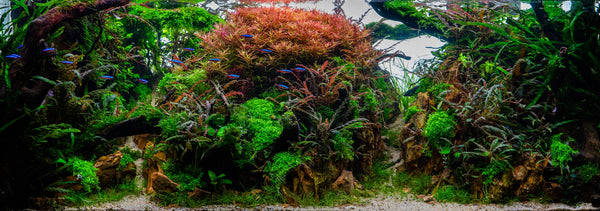
Join Us
Join our Facebook group and benefit from the knowledge of
Australia’s largest community of planted aquarium enthusiasts!

